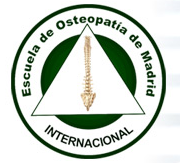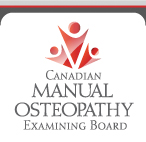ChemoCentryx's CCX168, an Orally Administered Complement C5a Receptor Inhibitor, Granted Orphan-Drug Designation in ANCA-Associated Diseases by the FDA
MOUNTAIN VIEW, Calif., June 3, 2014 (GLOBE NEWSWIRE) -- ChemoCentryx, Inc., (CCXI) reported today that the U.S. Food and Drug Administration (FDA) has granted orphan-drug designation for CCX168, an orally administered inhibitor that targets the receptor for the complement protein known as C5a (C5aR). The designation is for the treatment of anti-neutrophil cytoplasmic autoantibodies (ANCA) -associated vasculitides (granulomatosis with polyangiitis or Wegener's granulomatosis, microscopic polyangiitis, and Churg-Strauss syndrome). CCX168 is currently in the third step of the CLEAR clinical trial in patients with ANCA-associated vasculitis.
"Obtaining orphan-drug designation from the FDA is an important regulatory milestone for ChemoCentryx," said Thomas J. Schall, Ph.D., President and Chief Executive Officer, ChemoCentryx. "We believe this designation may facilitate an expeditious clinical development path for CCX168, and is emblematic of our deep commitment to supporting the community of patients with ANCA-associated vasculitis."
About Orphan-Drug Designation
Orphan-Drug Designation by the FDA is granted to novel drugs that treat a rare disease or condition affecting fewer than 200,000 patients in the U.S. The designation provides the drug developer with a seven year period of U.S. marketing exclusivity upon marketing approval for the designated indication, as well as with tax credits for clinical research costs, the ability to apply for annual grant funding, clinical research trial design assistance and the waiver of prescription drug user fees.
About the CCX168 Phase II CLEAR Trial
The CLEAR trial is a randomized, double-blind, placebo-controlled, three-step Phase II trial being conducted at multiple study centers in Europe. The clinical trial is designed to determine whether CCX168 can partially replace or potentially eliminate full-dose corticosteroids in patients with ANCA-associated vasculitis, a desirable outcome given the toxicities of high-dose corticosteroid use. Patients are currently being enrolled in the third step of the CLEAR trial.
After meeting recently with the FDA, ChemoCentryx is currently finalizing its clinical development strategy in the U.S. More detailed information will be shared in the coming months.
Data from the first two steps of the CLEAR trial show that patients receiving CCX168 showed improvements in the Birmingham Vasculitis Activity Score (BVAS), an overall disease activity index, including efficacy observed in both the renal and the non-renal components of the BVAS. BVAS response at 12 weeks was higher in patients on CCX168 than those patients receiving the standard of care. BVAS remission (a higher threshold that is thought to require 24 weeks of treatment or longer for maximum effect) at 12 weeks was comparable to standard of care. Both non-renal and renal disease components of BVAS were improved in patients on CCX168 treatment. Additionally, patients treated with CCX168 as compared to standard of care showed greater improvements in renal function based on renal disease activity measurements including estimated glomerular filtration rate (eGFR), urinary albumin:creatinine ratio (ACR), and urinary monocyte chemoattractant protein-1 (MCP-1):creatinine ratio.
About ANCA-Associated Vasculitis (AAV) and ANCA-Associated Renal Vasculitis (AARV)
ANCA-associated vasculitis (AAV) is a rare, severe, often fatal autoimmune disease that is caused by autoantibodies called anti-neutrophil cytoplasmic antibodies (ANCA). AAV is characterized by inflammation that can affect many different organs and areas of the body, such as eyes, lung, sinuses, nerves and the kidney. When the kidneys are involved, it is called ANCA-associated renal vasculitis (AARV) or glomerulonephritis. AARV is the most common subset of AAV.
AARV patients experience decreased kidney function, leaking of blood and protein into the urine, and can lead to kidney failure, if left untreated. The morbidity and mortality remains high, with many patients suffering severe adverse effects of treatment. Consequences of treatment-related toxicity rival those of the underlying diseases.
The annual incidence and prevalence of AAV in Europe and the United States is estimated to be approximately 10 cases per million people per year and 100 per million people, respectively.
About ChemoCentryx
ChemoCentryx, Inc. is a clinical-stage biopharmaceutical company focused on discovering, developing and commercializing orally-administered therapeutics that target the chemokine and chemoattractant systems in order to treat autoimmune diseases, inflammatory disorders and cancer. The chemokine system is a biological network that regulates inflammation via a collection of secreted chemokine molecules, or ligands, and their specific cell surface receptors. Based on its proprietary drug discovery and drug development platform, ChemoCentryx has generated multiple clinical and preclinical-stage programs, each targeting distinct chemokine and chemoattractant receptors with different small molecule compounds. CCX140, a CCR2 inhibitor, has been shown to be safe and well tolerated while demonstrating clinical activity on glycemic indices in a Phase II clinical trial in type 2 diabetics, and is now in Phase II clinical development for the treatment of diabetic nephropathy. CCX168, a C5aR inhibitor, has been granted orphan-drug designation by the FDA and recently completed the first two steps in an ongoing Phase II trial for the treatment of anti-neutrophil cytoplasmic antibody-associated renal vasculitis (AARV). CCX168 appears to be safe, well tolerated and successful in allowing both reduction and elimination of high-dose corticosteroids, part of standard of care for AARV patients, without compromising efficacy or safety during a 12-week treatment period. Vercirnon (also known as Traficet-EN or CCX282) is a specific CCR9 inhibitor for the treatment of inflammatory bowel disease. Other clinical programs include CCX872, a next generation CCR2 inhibitor, and CCX507, a next generation CCR9 inhibitor, both of which are in Phase I clinical testing and CCX354, a CCR1 inhibitor which successfully completed a Phase II clinical trial for the treatment of rheumatoid arthritis. ChemoCentryx also has several programs in advanced preclinical development.
Forward-Looking Statements
ChemoCentryx cautions that statements included in this press release that are not a description of historical facts are forward-looking statements. Words such as "may," "could," "will," "would," "should," "expect," "plan," "anticipate," "believe," "estimate," "intend," "predict," "seek," "contemplate," "potential" or "continue" or the negative of these terms or other comparable terminology are intended to identify forward-looking statements. These statements include statements regarding whether CCX168 will obtain regulatory approval or the speed with which such approval might be obtained. The inclusion of forward-looking statements should not be regarded as a representation by ChemoCentryx that any of its plans will be achieved. Actual results may differ from those set forth in this release due to the risks and uncertainties inherent in the ChemoCentryx business and other risks described in the Company's filings with the Securities and Exchange Commission ("SEC"). Investors are cautioned not to place undue reliance on these forward-looking statements, which speak only as of the date hereof, and ChemoCentryx undertakes no obligation to revise or update this news release to reflect events or circumstances after the date hereof. Further information regarding these and other risks is included under the heading "Risk Factors" in ChemoCentryx's periodic reports filed with the SEC, including ChemoCentryx's Annual Report on Form 10-K for the year ended December 31, 2013 which is available from the SEC's website (www.sec.gov) under the heading "Investors." All forward-looking statements are qualified in their entirety by this cautionary statement. This caution is made under the safe harbor provisions of Section 21E of the Private Securities Litigation Reform Act of 1995.
Source: ChemoCentryx, Inc.










 Master PCMH Criteria with Upcoming Webinars
Master PCMH Criteria with Upcoming Webinars







 The American Osteopathic Association (AOA) is the representative organization for the over 70,000 osteopathic physicians (DOs) and 18,000 osteopathic medical students in the United States. The organization promotes public health, encourages scientific research, serves as the primary certifying body...
The American Osteopathic Association (AOA) is the representative organization for the over 70,000 osteopathic physicians (DOs) and 18,000 osteopathic medical students in the United States. The organization promotes public health, encourages scientific research, serves as the primary certifying body...










 4:48
4:48
 Daniel Enriquez de Guevara
Daniel Enriquez de Guevara













.jpg)


















0 comentarios:
Publicar un comentario